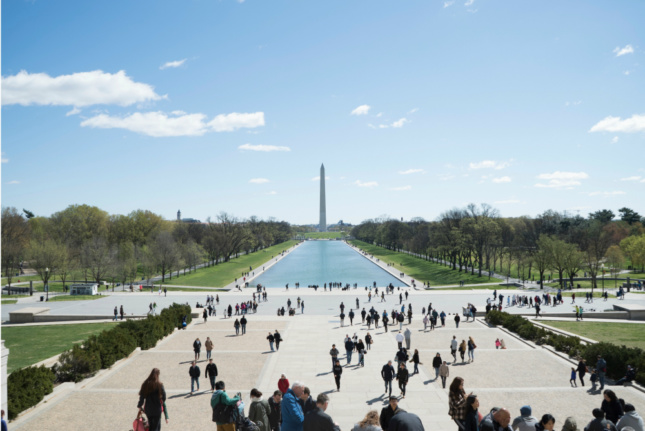This year gave us plenty to complain about, and plenty of debates to weigh in on. Writers from all over the country and many disciplines—from curators to economists—have contributed their knowledge to The Architect’s Newspaper (AN), whether in writing or as a precursor to editorials. Here are some of the best editorials and opinion pieces we have published in 2016. You might not agree with all of it, but we hope they are thought-provoking and you enjoy reading them! (See the rest of our Year in Review 2016 articles here.)

AIA pledges to work with Donald Trump, membership recoils
Upon the election of President-Elect Trump, AIA CEO Robert Ivy issued a statement of solidarity with the newly-minted PEOTUS, mainly in support of his infrastructure spending. Our editorial staff responded with a statement questioning this move, and we solicited reactions from architects within and outside of the AIA. The hybrid article helped elicit a pair of apologies from Ivy, and we kept up on the outpouring of reactions as they came in.
How Donald Trump transformed New York without any regard for design quality
When The Donald was still one of a cadre of GOP candidates, Editor-in-Chief William Menking took a historical look at the architecture of Trump and the critical reactions it has garnered.
Designing the Border Wall?
When outrage erupted from the online competition “Building the Border Wall?” and many were discussing the ethics of building such a wall, architect and educator Ronald Rael took a closer look at the nuances of the conditions at the border.
Why the Met Breuer Matters
When the newly-refurbished Met Breuer opened, Senior Editor Matt Shaw visited the building with Associate Professor and Director of Historic Preservation at Columbia GSAPP Jorge Otero-Pailos to take a look at how it shaped up and what it means for New York.
What happened to the MAS?
Why has the Municipal Art Society—a once-proud organization with a century and half of history—been handed over to the real estate industry?
Female-ness, Corb, and Contraband
Architect Andreas Angelidakis and artist Juliana Huxtable’s contribution was the first in a series of partnerships between AN and Façadomy, a contemporary journal that reflects on issues of identity through the lenses of art and architecture.
Is the U.S.’s Biennale Pavilion actually the Quicken Loans Pavilion?
Editor-in-Chief William Menking was less than enthused about the proposals put forth by the curators of the 2016 U.S. Pavilion at the Venice Biennale.
Renzo Piano’s Whitney is an architectural “tourist trap”
One year after its opening, Senior Editor Matt Shaw reflected on what the new Whitney Museum of American Art brings to the city of New York and its architecture heritage.
Architectural education is broken—here’s how to fix it
Los Angeles architect Peter Zellner wonders what can be better in architecture education today, and posits a new direction for the academy. Todd Gannon, cultural studies coordinator at SCI-Arc, issued a response to the following article that can be found here. Zellner subsequently launched a school.
Respecting the SITE
An odd design by an odd choice of architect at SITE Santa Fe raises questions about what the Southwest is really about, says Senior Editor Matt Shaw.
Are micro-apartments a revolutionary trend? Or are developers exploiting an out-of-control market?
The recent trend of smaller units with more amenities could be part of a solution to the housing crisis, but it has the potential to be a territorial concession for the renting class, says Web Editor Zachary Edelson.
How institutionalized racism and housing policy segregated our cities
Richard Rothstein of the Economic Policy Institute details the history of state-sponsored segregation, focusing on housing policy in the postwar era to today.
After Oakland, here’s how architects can help make DIY spaces safer
Princeton, New Jersey–based Melissa J. Frost and Seattle-based Susan Surface are initiating a discussion to educate the operators of DIY venues about safety measures to prevent injuries at their spaces.
Joel Sanders on the past and future of gender issues in architecture
Alessandro Bava of London-based collective åyr sits down with STUD author Joel Sanders to discuss the 20th anniversary of the book and what it means today.
What do New Yorkers get when privately-funded public art goes big?
Associate Editor Audrey Wachs wonders what the $200 million geegaw at Hudson Yards will offer the city of New York.
Hudson River Park/Pier 40 deal reveals the tangled web of calculated collusion that shapes NYC
Michael Sorkin “follows the money” to expose a decades-long history of a controversial site on New York’s west side.